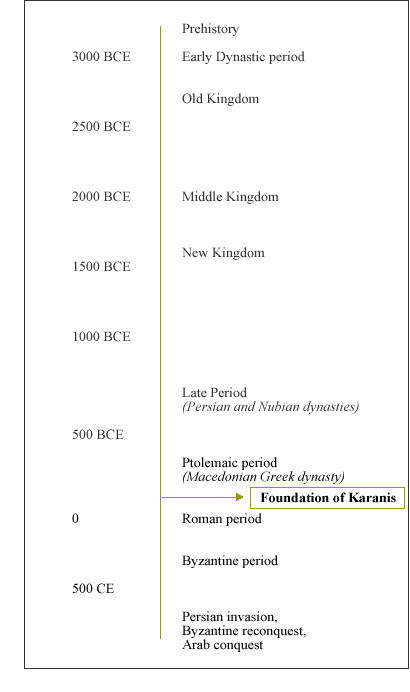
 |
 |
 |
 |
 |
 |
 |
 |
Karanis in Egypt: Chronology
 Foundation
Foundation
During the Ptolemaic period, when the Fayum was again developed for its agricultural potential, the size of the lake was reduced a second time and more arable land reclaimed. Karanis was founded on the edge of the lake in the mid-third century BCE. Many other towns were established around the lake, and the region became one of the more heavily populated parts of the country.
Growth and Decline
Following further reduction of the lake during the Roman period, Karanis attained the height of its prosperity. While farming was the town’s main source of wealth, Karanis enjoyed other sources of revenue from various professions and trades. Karanis numbered perhaps 2,500 inhabitants at its largest in the second half of the third century CE, including a sizeable community of military veterans. During the fourth century, Karanis began to experience a decline in its prosperity and its population, as did many other Fayum towns. Toward the end of the Byzantine period, in the late sixth and early seventh centuries, land reclamation and irrigation efforts ended, desertification intensified, and Karanis seems to have been largely abandoned.